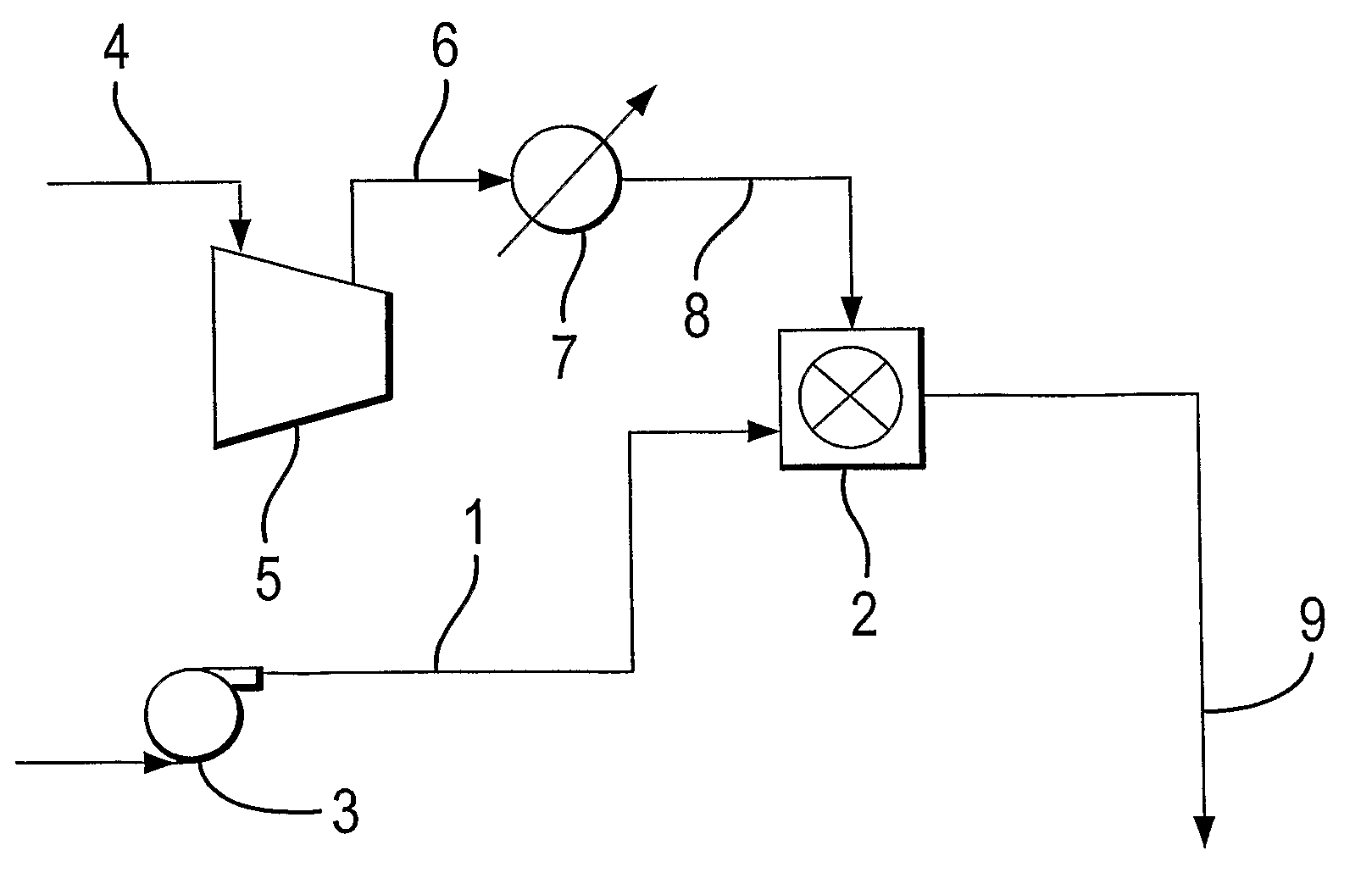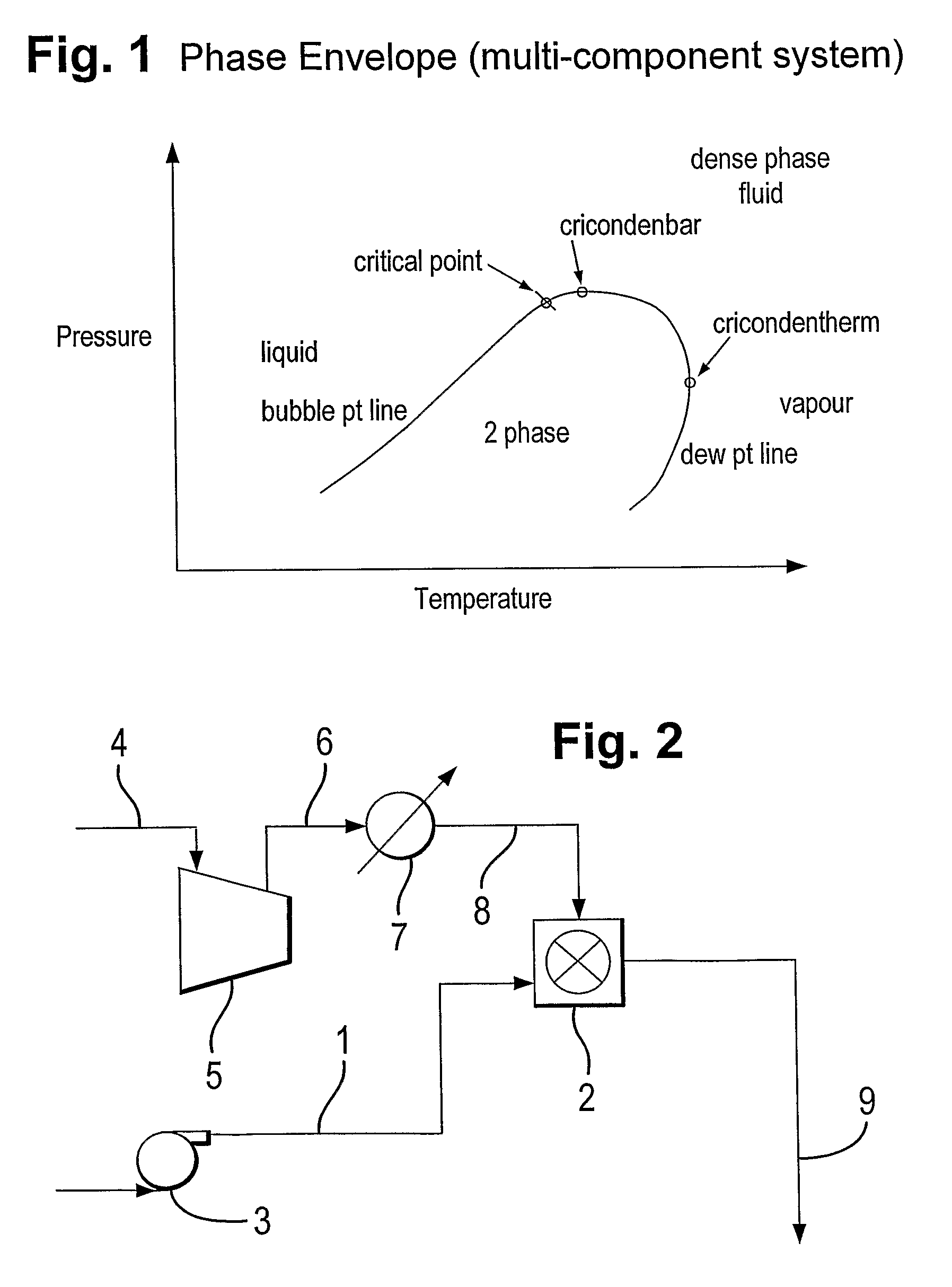Method of injecting carbon dioxide
a carbon dioxide and injection method technology, applied in the field of injection methods, can solve the problems of undesirable release of carbon dioxide into the atmosphere, loss of cosub>2 /sub, and loss of cosub>2 /sub, and achieve the effects of reducing injection costs, reducing injection costs, and greater cost of compressing a vapour stream
- Summary
- Abstract
- Description
- Claims
- Application Information
AI Technical Summary
Benefits of technology
Problems solved by technology
Method used
Image
Examples
Embodiment Construction
[0066]FIG. 1 illustrates a phase diagram for a generic multi-component composition.
[0067]The region inside the phase diagram is two phase. The region to the left of the phase diagram is liquid, the region to the right of the phase diagram is vapour, the region inside the phase diagram is two phase, and the region above the phase diagram (above the cricondenbar) is dense phase.
[0068]The “cricondenbar” for a multi-component composition is the highest pressure at which two phases can coexist. Thus, where the pressure is above the cricondenbar, a multi-component composition cannot be two-phase (both liquid and vapour).
[0069]The “cricondentherm” for a multi-component composition is the highest temperature at which two phases can co-exist.
[0070]The “critical point” for a multi-component composition is an experimentally determinable point and is the point (temperature and pressure) on the phase diagram where the mixture properties in the vapour phase and the liquid phase are the same.
[0071...
PUM
 Login to View More
Login to View More Abstract
Description
Claims
Application Information
 Login to View More
Login to View More - R&D
- Intellectual Property
- Life Sciences
- Materials
- Tech Scout
- Unparalleled Data Quality
- Higher Quality Content
- 60% Fewer Hallucinations
Browse by: Latest US Patents, China's latest patents, Technical Efficacy Thesaurus, Application Domain, Technology Topic, Popular Technical Reports.
© 2025 PatSnap. All rights reserved.Legal|Privacy policy|Modern Slavery Act Transparency Statement|Sitemap|About US| Contact US: help@patsnap.com


